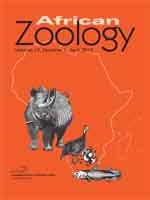The current study set out to investigate the potential effects of olfactory stimuli on the basal circulating levels of luteinizing hormone (LH) and the response of the pituitary to an exogenous gonadotropin-releasing hormone (GnRH) challenge in two mole-rat species with induced ovulation but contrasting mating and social systems. Females were either kept in isolation, allowed only olfactory and auditory contact or in physical contact with a male. Basal LH as well as pituitary challenged LH blood samples were collected after six hours. Post-challenge LH levels were significantly elevated compared to baseline levels in both species. However, neither basal nor post-challenge LH levels differed significantly between treatments for females of either species. At the same time, while baseline LH was comparable between the two species, post-challenge levels were significantly greater for the solitary species. Our findings negate a modulatory role of male cues on LH levels but suggest increases in pituitary sensitivity in the solitary species. This could enhance reproductive success in species with only sporadic encounters between the sexes and merits further studies in other species.
How to translate text using browser tools
1 April 2012
Possible Modulatory Effects of Male Cues and Social System on Luteinizing Hormone and Pituitary Sensitivity in Two African Mole-Rats
N.C. Bennett,
H. Lutermann
ACCESS THE FULL ARTICLE

African Zoology
Vol. 47 • No. 1
April 2012
Vol. 47 • No. 1
April 2012
Bathyergidae
induced ovulation
luteinizing hormone




